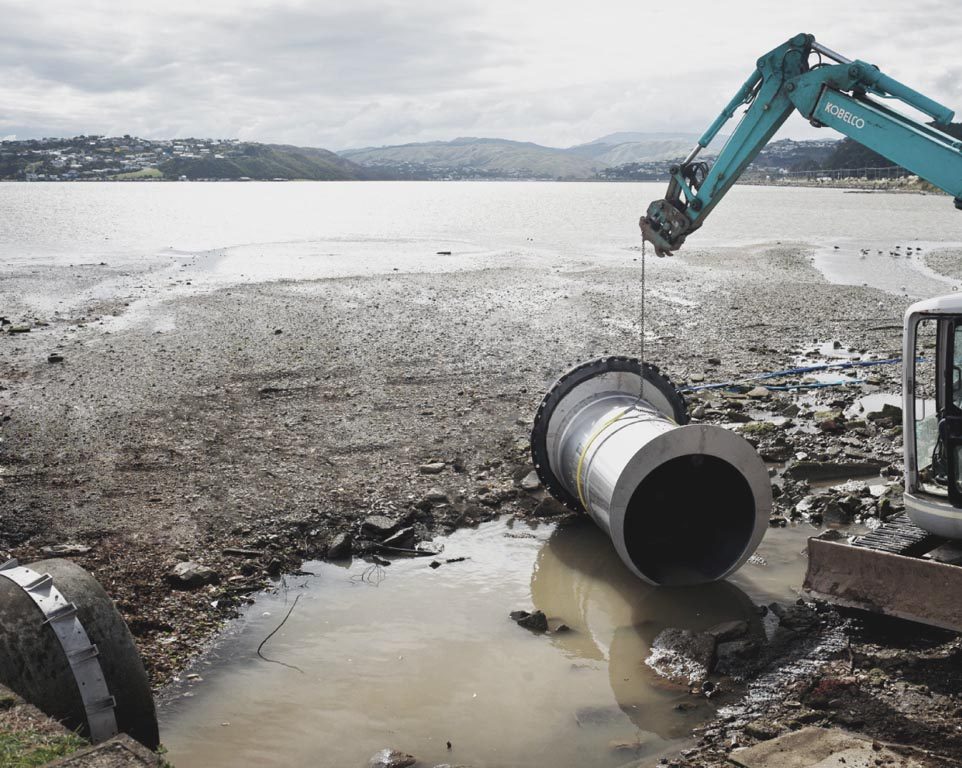In an effort to help reduce flooding in Porirua’s city centre during heavy rainfalls, a large 1.6 metre WaStop was installed to stop tidal waters getting into the stormwater network.
This large WaStop valve was installed in the stormwater outfall into the harbour at the bottom of Semple Street. The Mayor of Porirua at the time, Nick Leggett, emphasized that underground infrastructure is a major focus for the council’s attempts to prevent flooding.
“This is a response to the flooding issues we sometimes face in Porirua. The city centre is low-lying and we need to ensure in heavy rainfall events that high tides encroaching up into the stormwater network don’t cause additional problems.” Porirua was the first council in New Zealand to test the WaStop non-return valves.
The Council’s former Water Services Engineer, Desmond Scrimgeour, said, “Porirua City Council has led the way in using this technology from Sweden. A number of other local authorities who heard about it, have come to see how well they work, and are now using them in their own districts.”
While there are a number of useful applications for the WaStop Valves, Porirua initially installed them at high-impact low-lying stormwater outfalls into the harbour. In total, 15 WaStop Valves were installed within 18 months to stop the encroachment of tidal waters that take up vital stormwater network capacity. Scrimgeour said, “Not only have they given us a large gain in available capacity, but we have also saved a lot of money by not having to undertake the upgrade of large amounts of infrastructure to obtain the same results. It’s an effective and innovative alternative to the huge costs of building new infrastructure.”
Of the 70 stormwater outfalls Porirua has into the harbour, a significant portion of these are very flat on their approach to the harbour. This generally means they are severely influenced by high tide. “The problem with the outfalls is that if a rainfall event coincides with a high tide, the ability of the stormwater network to discharge is severely restricted.” Scrimgeour said. “This will also serve the city well into the future, helping to combat predicted sea level rises.”



